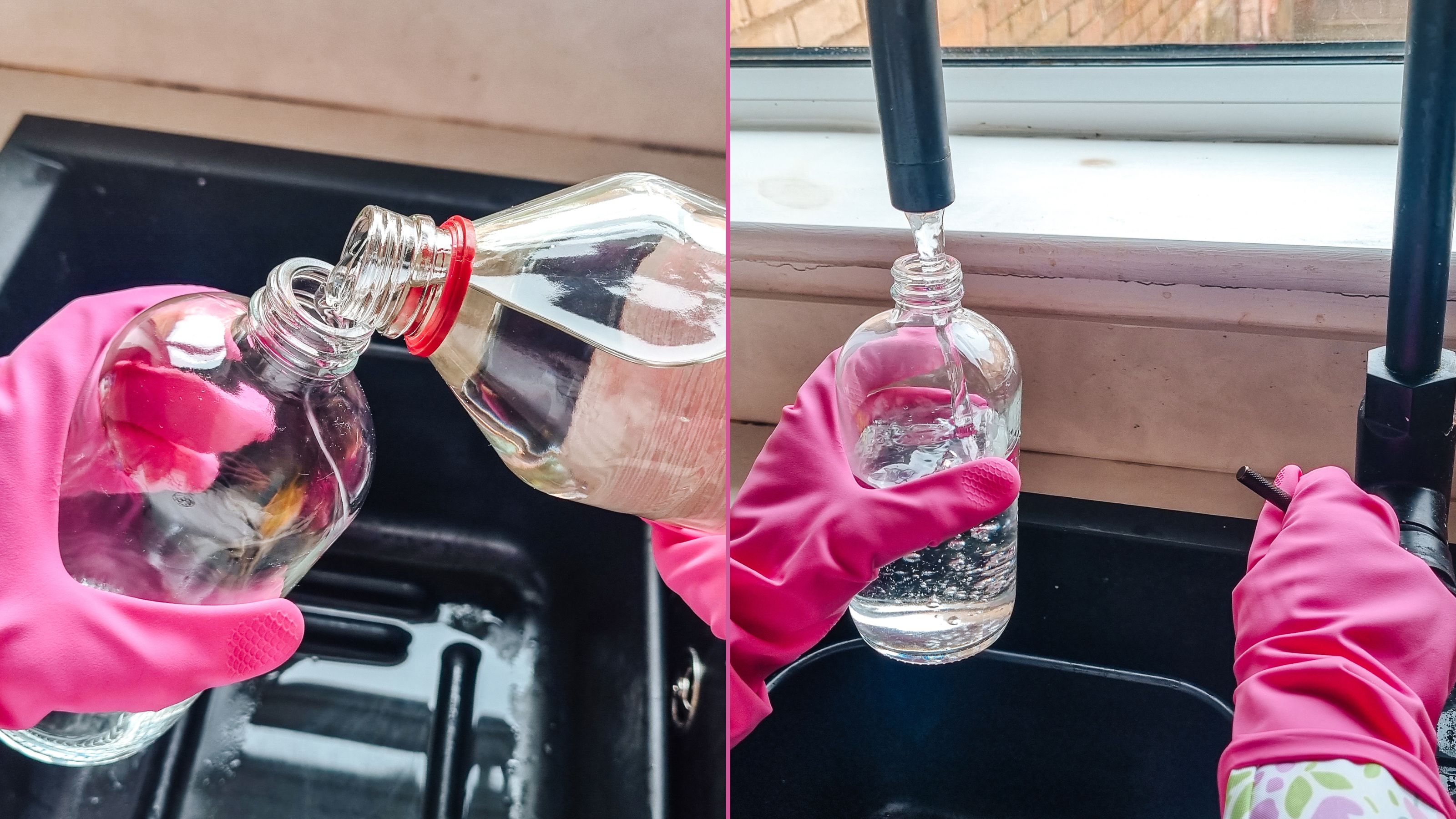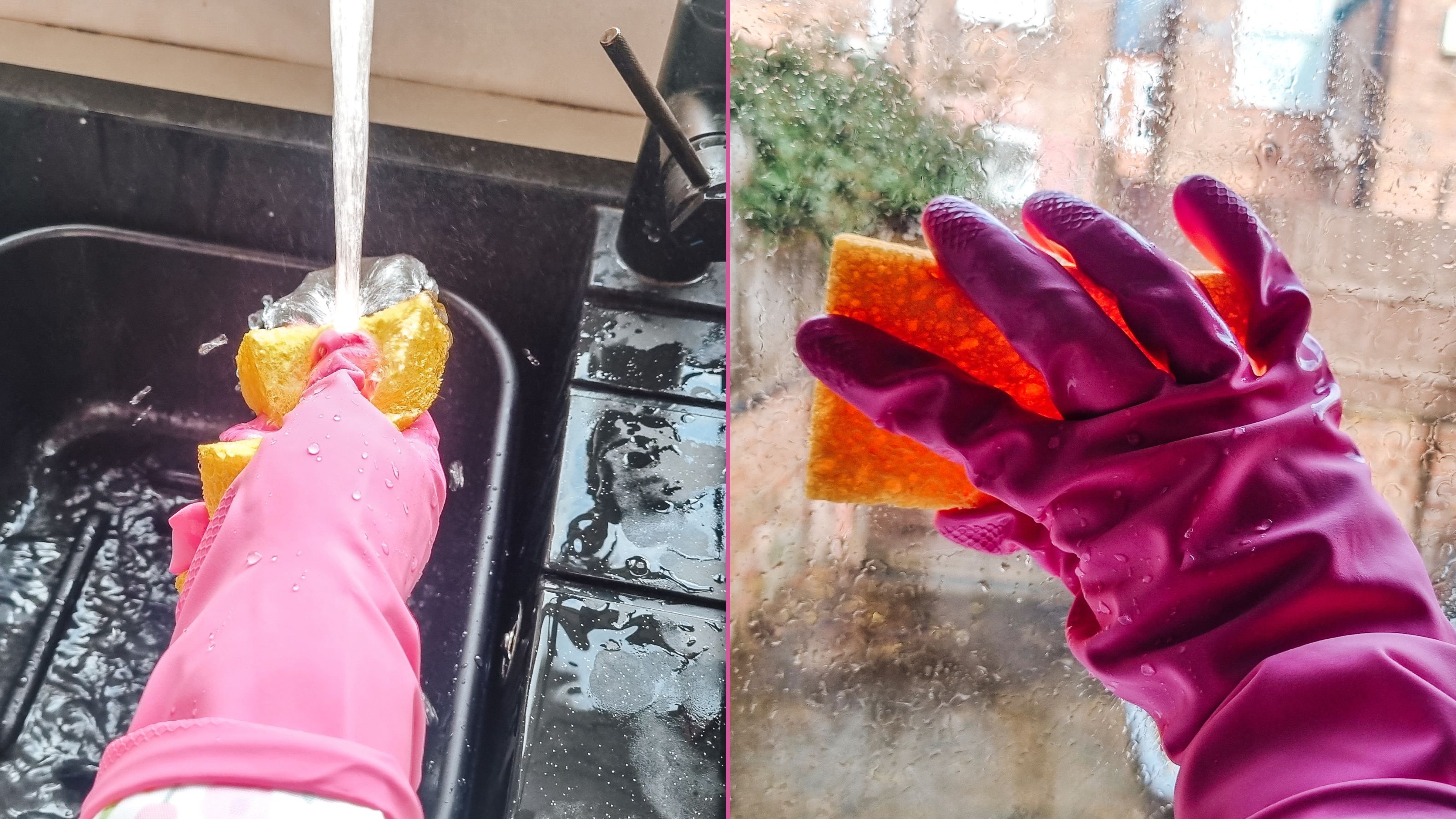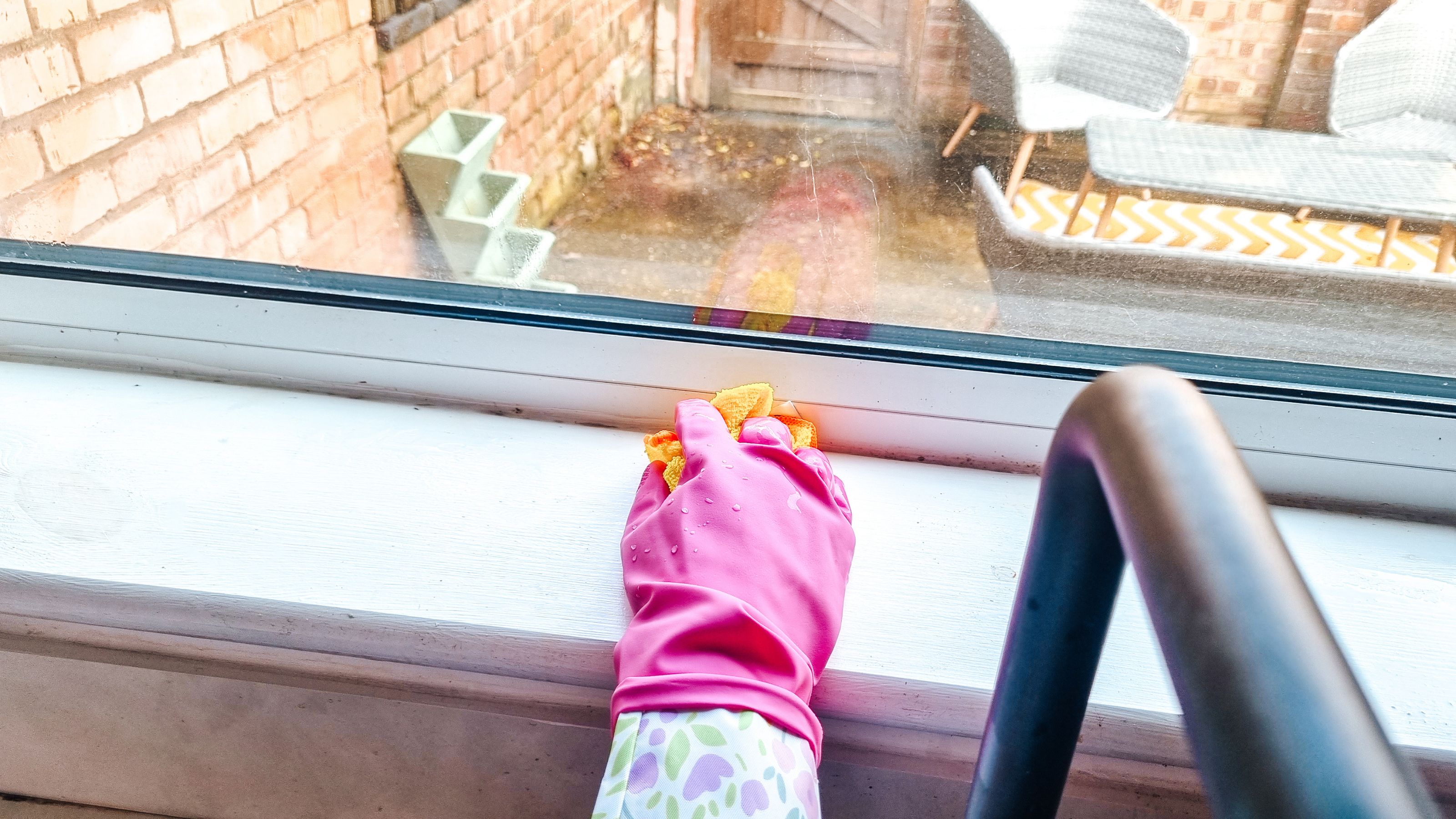
When I have hard-to-clean stains that just won’t budge, I’ll always reach for the vinegar to clean. Its natural acidity makes it such a great solution. My grandma always swore by it, and now that I have a place to clean, I’m totally obsessed too.
Windows are one of the areas of the house that vinegar cleans super well, as it can knock out hard-to-remove stains and makes the glass super shiny.
Of course, cleaning windows with vinegar isn't just a case of cracking open a bottle, splashing your windows, and hoping for the best. That being said, it’s super easy to do, and won’t take you very long.
My windows needed some major TLC, and I thought what better time to put together a how-to? Truthfully, I haven’t cleaned this set of windows since I moved in around two years ago, so they've got serious grime.
I’ll be showing you how to put together the vinegar cleaning mixture, how to clean windows with vinegar, plus answering common questions.
Good to know
Time: 10 minutes per set of windows. Putting together the mixture will take under two minutes.
Difficulty: Easy. There’s nothing complicated going on here — just mixing together a couple of ingredients, then spraying and wiping down the window.
Helpful hints: Be sure to choose a cloudy day to do this, rather than a sunny day. If you choose a sunny day, the mixture will dry too quickly, which can lead to streaky marks on the window. You can also put a few drops of essential oil into the mixture, so your apartment doesn’t smell like vinegar when you’re done.
Here's what you'll need
- White vinegar: I used Sarson's because that's what I had in my cupboard, but we also love Heinz’s cleaning vinegar here at Real Homes. You can grab both of these from Amazon.
- Water: You know, from the tap.
- A spray bottle: You can always recycle a spray bottle from a previous household cleaning product, but I used a glass spray bottle (this is Amazon’s Choice) as it’s easy to clean and reuse.
- Rubber gloves: Thick ones are best, such as the Mr. Clean latex gloves from Amazon.
- A compressed sponge: These funky, colorful ones from Amazon are also climate-pledge friendly.
- A squeegee: I used one that I had already, but if you don’t have one, this is Amazon’s Choice.
- A microfiber cloth: I love the Spontex microfiber cloths from Amazon, as they’re easy to clean and absorbent AF.
How to clean windows with vinegar
Step 1: Put on your rubber gloves

Rubber gloves are absolute must-haves for your cleaning caddy, because you don’t want to get any cleaning product on you when cleaning. Vinegar is acidic, so these will help protect your skin and stop you from having vinegary-scented hands afterward.
Step 2: Mix your vinegar and water solution together

Fill your spray bottle (like this one from Amazon) with half vinegar (we always use Heinz’s cleaning vinegar from Amazon) and half water. This is the easiest way to see how much you need to fill your bottle, and saves you having to pour the mixture from a bowl into the bottle. I recommend doing this over the sink, just in case you accidentally spill any vinegar (I’m a major clutz, so I always do it). Then, just give it a light shake.
Top tip: You can add a couple of drops of essential oil (I used Aromaworks) to make the mixture smell better, but this isn’t necessary.
Step 3: Spray the vinegar solution onto the window

Spritz a few times across the window, moving from top to bottom so the whole window pane is pretty much covered. You don’t need to completely douse the window, nor do you need to use all the mixture on one window.
If you have really tough stains, I recommend leaving the mixture on for a couple of minutes to work its magic.
WARNING: If you have paint around the windows, make sure not to spritz your solution on this, as the vinegar can damage the paintwork.
Step 4: Wipe the solution around with a sponge

For cleaning around the house, I recommend using compressed sponges (these ones are Amazon’s Choice), as they won’t scratch your surfaces and can be reused. First, run the sponge under the sink — this makes it less rigid and easier to use. Then, wipe the solution on the window around the whole window pane surface, in a circular motion.
Top tip: Squeeze the sponge to get extra water out before using it on the window, so you don’t make the glass overly wet.
Step 5: Use a squeegee to wipe the excess off

When it comes to cleaning glass, squeegees (hello Amazon’s squeegee Choice) are total miracle workers. It's such a simple process, but so effective. It makes the glass streak-free, so you aren’t left with any smudges that will undo all your hard work. Holding the squeegee handle, simply use the tool to wipe down the window from top to bottom, and repeat this moving across the window until the whole area has been wiped.
Top tip: Make sure to wipe vertically, rather than horizontally, so the excess water can be wiped from the ledge easily.
Step 6: Dry the window with a microfiber cloth

Now that your window has been cleaned with solution, you can dry it with a microfiber cloth — I used a Spontex one, which you can get from Amazon. Wipe from top to bottom so you don't leave any streaks. I recommend using one of these rather than a kitchen towel since it’s more sustainable and it doesn’t leave messy fibers on the window. It’s also important not to skip this step, so you don’t end up with any dried-up water drops.
Step 7: Wipe the excess water off your window ledge

Using a microfiber cloth, go along the ledge of your window and dry off any dirty water that trickled down. You can follow this with a spritz and wipe with a natural all-purpose cleaner, such as the Mrs. Meyer’s one that's $4.49 on Amazon (the Real Homes team is obsessed with this, BTW).
FAQs
Is vinegar better to use on windows than Windex?
Vinegar is a natural cleaner, meaning it’s more environmentally friendly to use on your windows than the chemical-based Windex. However, for the shiniest windows possible, Windex provides better results.
What is the best way to clean windows without streaking?
Use a squeegee to remove any excess solution, and then wipe with a microfiber cloth from top to bottom. Also, choose a cloudy day to clean your windows rather than a sunny one, as the sun will make the cleaning solution dry faster, which then leaves streaks.
Can you use straight vinegar on your window?
No, you shouldn’t use vinegar alone when cleaning your window. While vinegar won’t damage the glass, it could damage the outer frame when used by itself, due to it being acidic. Instead, make it into a solution that’s half vinegar and half water, so it’s diluted.







